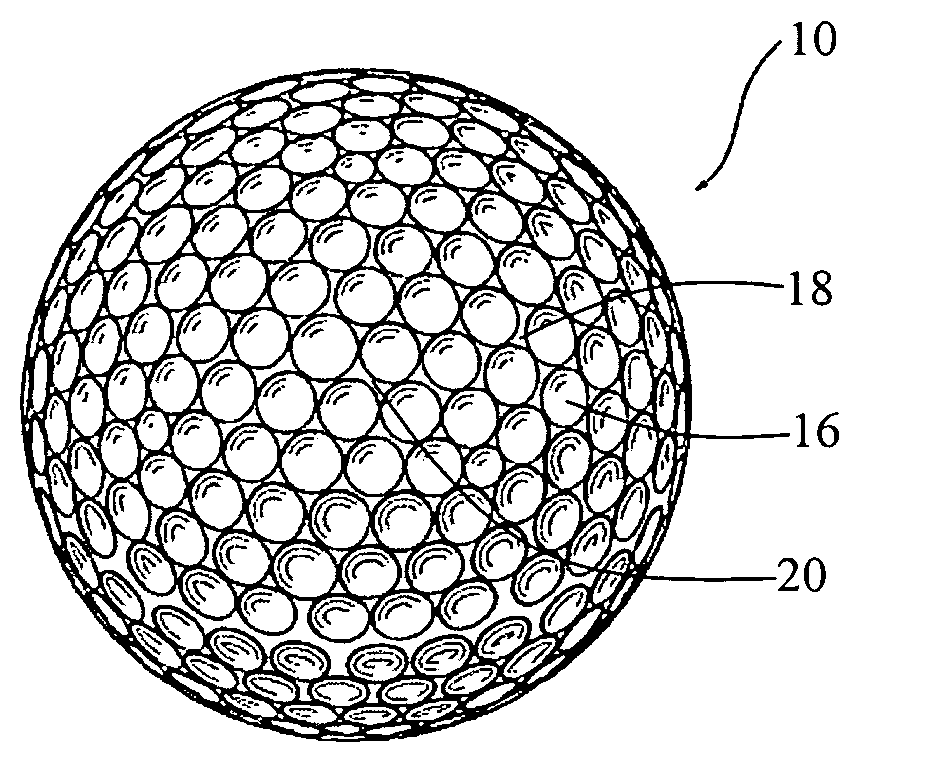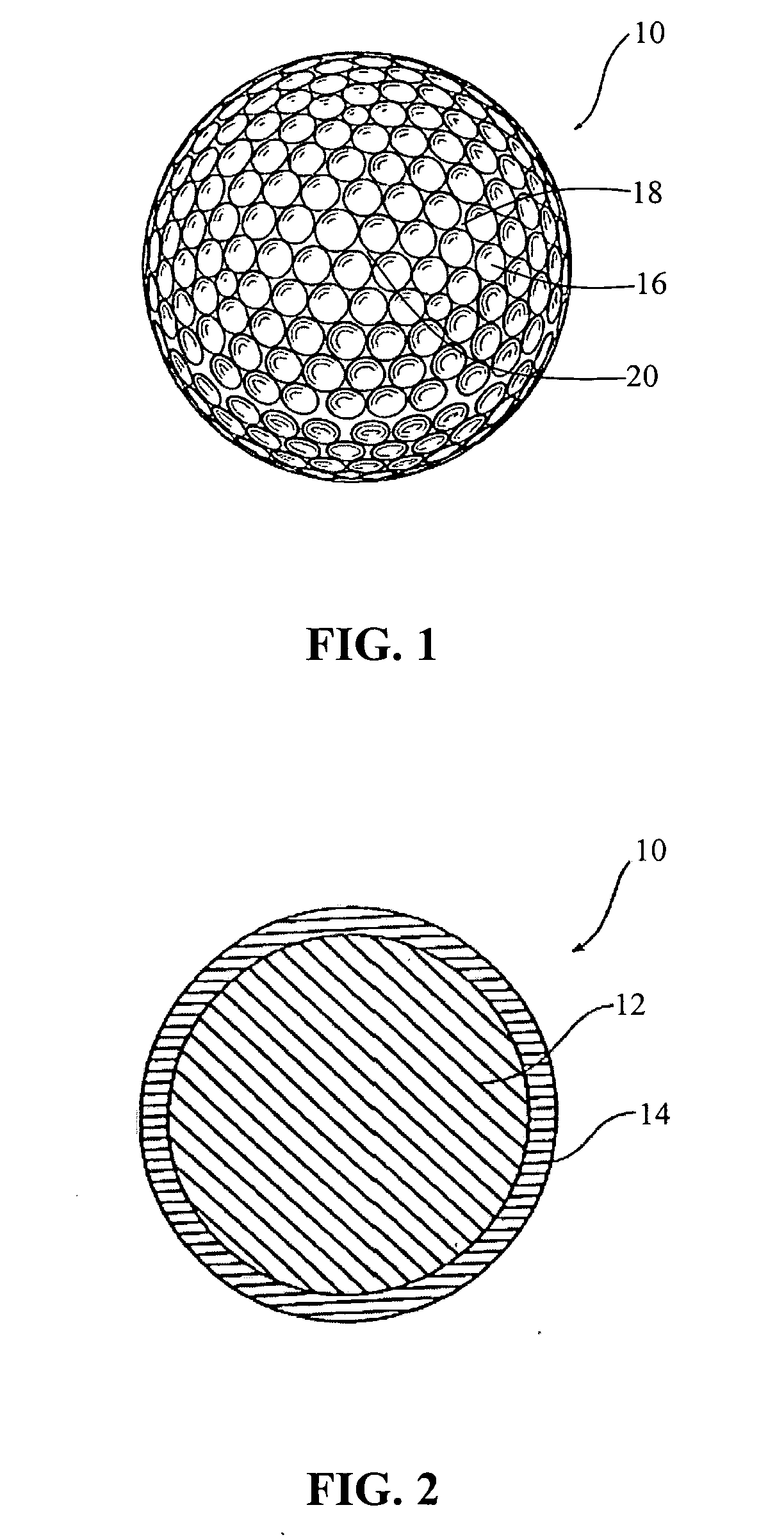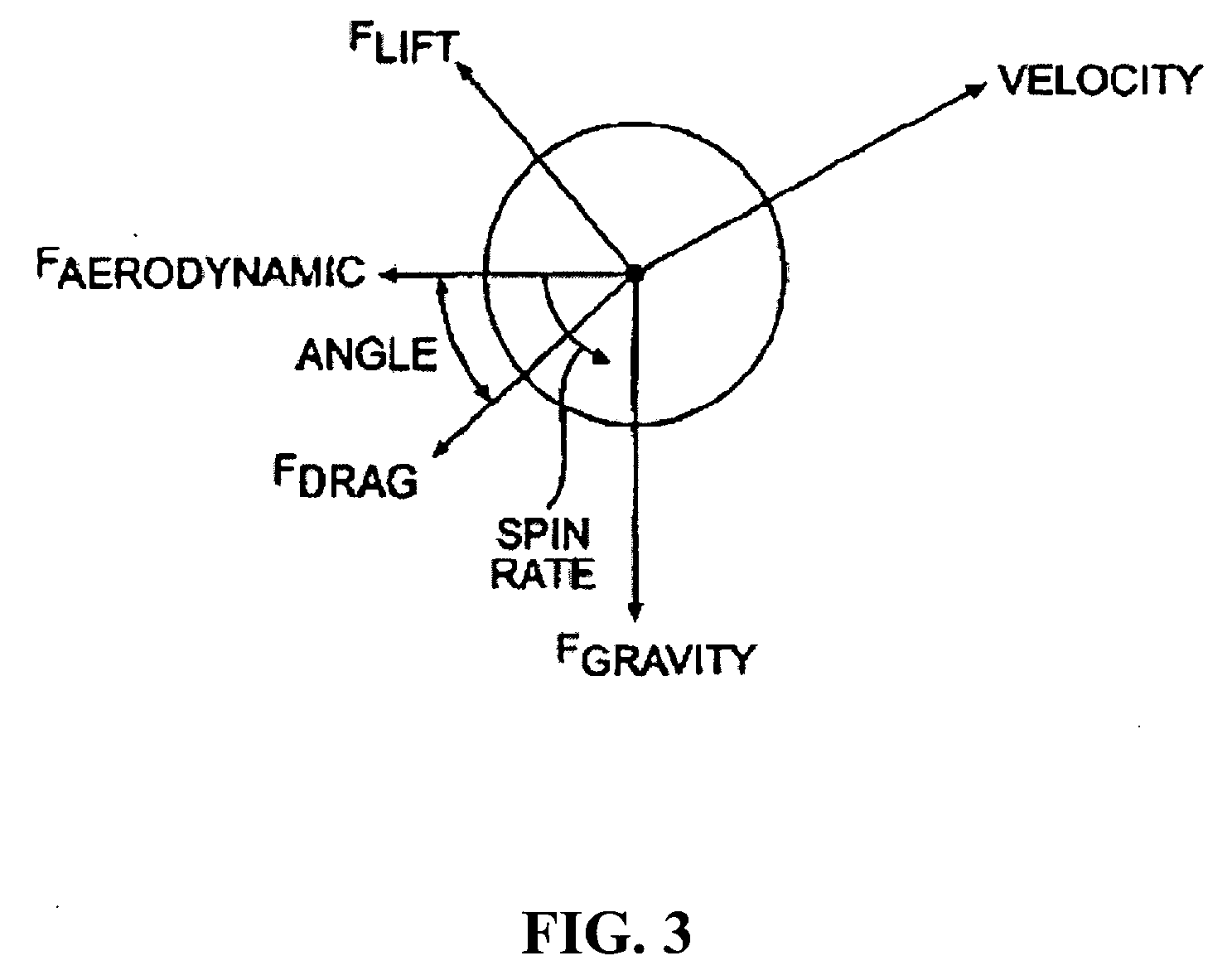Low-weight two piece golf balls
a golf ball and low-weight technology, applied in the field of golf balls, can solve the problems of affecting the trajectory of the golf ball, the ball does not fly very far, and the ball is not very strong, so as to achieve the optimal trajectory and overall distance of the golf ball
- Summary
- Abstract
- Description
- Claims
- Application Information
AI Technical Summary
Benefits of technology
Problems solved by technology
Method used
Image
Examples
Embodiment Construction
[0026] The distance that a golf ball would travel upon impact is a function of the coefficient of restitution (CoR) and the aerodynamic characteristics of the ball. The CoR is defined as the ratio of the relative velocity of two colliding objects after the collision to the relative velocity of the two colliding objects prior to the collision. The CoR varies from 0 to 1.0. A CoR value of 1.0 is equivalent to a perfectly elastic collision, and a CoR value of 0.0 is equivalent to a perfectly inelastic collision. For golf balls, CoR has been approximated as a ratio of the velocity of the golf ball after impact to the velocity of the golf ball prior to impact.
[0027] CoR is an important measurement of the collision between the ball and a large mass. One conventional technique for measuring CoR uses a golf ball or golf ball subassembly, air cannon, and a stationary vertical steel plate. The steel plate provides an impact surface weighing about 100 pounds or about 45 kilograms. A pair of b...
PUM
 Login to View More
Login to View More Abstract
Description
Claims
Application Information
 Login to View More
Login to View More - R&D
- Intellectual Property
- Life Sciences
- Materials
- Tech Scout
- Unparalleled Data Quality
- Higher Quality Content
- 60% Fewer Hallucinations
Browse by: Latest US Patents, China's latest patents, Technical Efficacy Thesaurus, Application Domain, Technology Topic, Popular Technical Reports.
© 2025 PatSnap. All rights reserved.Legal|Privacy policy|Modern Slavery Act Transparency Statement|Sitemap|About US| Contact US: help@patsnap.com



